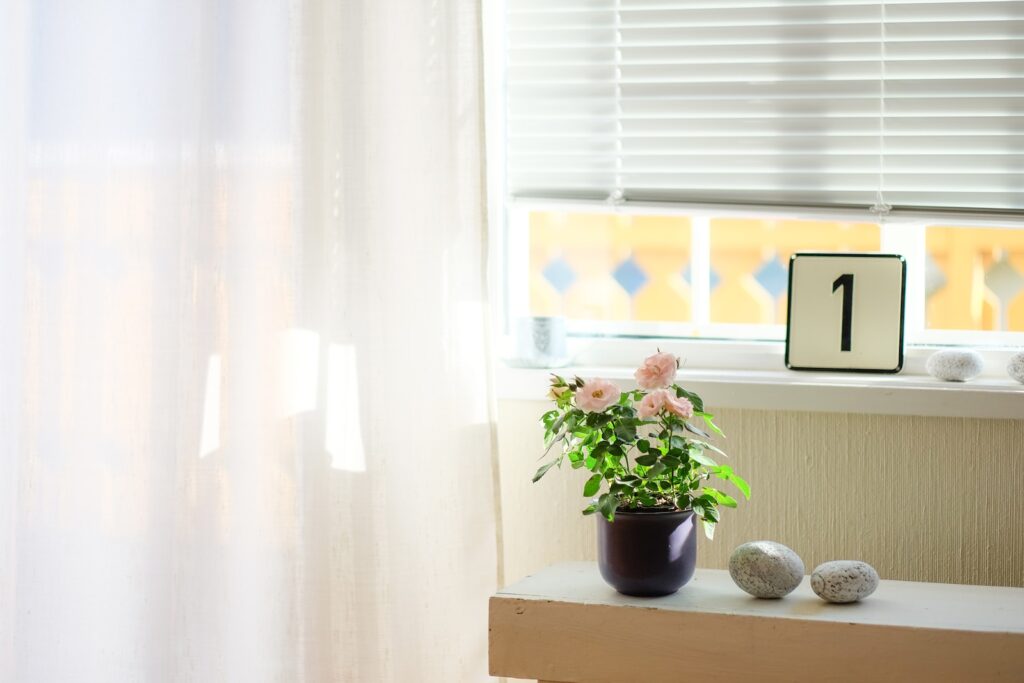Curtains are often considered the most important aspect of any room, as they add a touch of elegance and complete the overall look. Yet, if not taken care of properly, curtains can easily become dusty and unattractive. To ensure your curtains remain in pristine condition, curtain cleaning is essential.
From gathering the necessary supplies to properly cleaning and maintaining the curtains, there are many factors that will affect the cost of curtain cleaning. This article will provide an overview of curtain cleaning costs, as well as tips on how to keep your curtains looking good for longer periods of time.
Factors Affecting Curtain Cleaning Cost
Curtains come in a variety of types, each requiring different levels of cleaning. Thin gauzy curtains may need to be machine washed while thicker drapes are better suited for dry cleaning. The size of the curtains must also be taken into account, as larger panels may require more time and effort to clean. Special stain removal techniques may also be necessary, depending on the type of fabric and the severity of the stain. Lastly, the color complexity of the curtains may be a factor, as intricate patterns or multiple colors may require more attention when cleaning.
-
Type of Curtains
To get to the nitty-gritty of it, let’s dive into the types of curtains that will affect the cost of cleaning. Fabric curtains come in all sorts of thicknesses, materials, and patterns. The thicker the curtain, the more costly it will be to clean. That’s because it needs more cleaning agents and more time to clean properly. Lighter curtains, on the other hand, will be much less expensive to clean. Sheers, for example, are often made of lightweight, sheer fabrics, making them a great option for those who want to conserve on cleaning costs.
When it comes to materials, some fabrics will require a different cleaning approach than others. Natural fibers such as cotton, linen, and silk require a gentler cleaning process with fewer chemicals than synthetic fabrics like polyester and acrylic. This is because natural fibers are more delicate and prone to damage, so they need to be handled with care.
Patterns can also influence the cost of cleaning curtains. Complex patterns, such as those with multiple colors, will require more time and effort to clean properly, so they will be more expensive than simpler patterns.
-
Size of Curtains
In addition to the type of curtains, the size of curtains is also an important factor in determining the cost of curtain cleaning. Generally, the bigger the curtains, the higher the cost. This is because larger curtains require more effort to clean and take more time, thus raising the cost. Therefore, if you need to have large curtains cleaned, expect to pay a higher cost.
The size of the curtains also affects the level of cleaning required. If the curtains are large, then they likely have more dirt and dust deposited on them and will require a more thorough cleaning. Furthermore, the additional material may mean that the cleaning solution used has to be more robust than usual, which can add to the cost.
It is also worth bearing in mind that if the curtains are large and the stain removal required is more complex, then the cost of cleaning is likely to be higher too. This is because the cleaning professional will have to use more advanced techniques and specialized products in order to remove all the stains and dirt from the large curtains.
Moreover, the color complexity of the curtains can also affect the cost. If the curtains have intricate patterns or colors, then the cleaning process may require extra precaution.
-
Level of Cleaning Required
To further understand the factors affecting curtain cleaning costs, we must consider the level of cleaning required. This is determined by a variety of factors, such as the type of fabric and the amount of dirt or soil buildup. Generally speaking, light cleaning involves spot-treating and removing surface dirt, while deep cleaning involves more intensive methods such as steam cleaning.
The type of curtains also affects the cleaning cost. Natural fabrics, such as cotton, linen, and silk, are more expensive to clean because they are more delicate and require special handling. Synthetic fabrics, such as polyester and nylon, are more cost-effective to clean because they are more durable and can withstand harsher cleaning methods.
The size of curtains also affects the cost of cleaning. Smaller curtains may require less time to clean, which can result in lower overall costs. On the other hand, larger curtains may require more time and effort, which can result in higher overall costs.
Stain removal can be a major factor in curtain cleaning costs. Some stains, such as those caused by food or drinks, can be removed with simple spot treatments. However, more stubborn stains may require specialized cleaning products or even professional intervention. In these cases, the cleaning cost can become quite expensive.
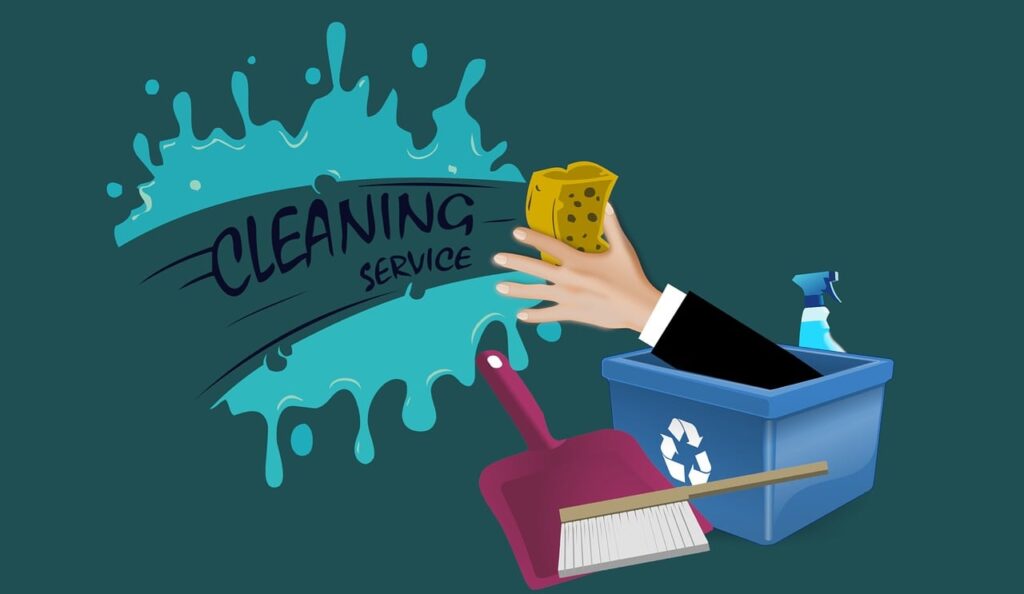
Hiring a Professional Cleaner
The cost of hiring a professional cleaner can be quite substantial and depends on the size of the area to be cleaned, the frequency of cleaning, and the type of cleaning required. It is important to benefit from professional cleaning to ensure that the job is done right and that the results are lasting. Finding a reliable and experienced cleaner can be a challenge, and seeking out references from friends and family can help narrow down the search. A good professional cleaner will bring along their own equipment and cleaning products, ensuring that the job is done to the highest standards.
-
Cost of Professional Cleaning
Considering the cost of professional curtain cleaning can be daunting, it’s important to weigh the benefits of having a professional cleaner handle the task. After all, they are experienced and knowledgeable about the best practices for cleaning and maintenance, and have access to tools and cleansers that the average person may not.
The cost of a professional cleaner will vary depending on the service you need, the size of the curtains, and the material of the curtains. Typically, you can expect to pay between $50 and $100 for a single set of curtains. However, if the curtains are particularly large or delicate, the price may increase.
When hiring a professional cleaner, find one with experience and a good reputation. Make sure to ask them about the types of equipment and cleaning products they use, and make sure that they are safe and suitable for the fabric or material of your curtains.
A professional cleaner, they should also have the necessary cleaning supplies and equipment to complete the job. This should include a vacuum cleaner, steam cleaner, and other cleaning tools.
The type of cleaning products used is equally as important.
-
Benefits of Professional Cleaning
Given the important role curtains play in the overall aesthetic of any room, it makes sense to invest in professional curtain cleaning services. Hiring a professional cleaner comes with several benefits that make the cost of the service worthwhile. Not only do the results look and feel better, but the process is also safer and more efficient.
A professional cleaner will have access to more powerful equipment and cleaning products than the average homeowner, resulting in a deeper clean that’s more effective in removing dirt and stains. Professional cleaners also have the experience to know what kind of cleaning materials and techniques work best on different types of fabrics.
In addition, a professional cleaner will be able to work faster and avoid mistakes that can be costly. They will also know how to take the necessary safety precautions to avoid any potential damage to the curtains. Professional cleaners will also use specialized techniques such as steam cleaning, which is not possible with DIY curtain cleaning.
Finally, professional curtain cleaning services may extend the life of the curtains. Cleaning the curtains regularly can prevent the build-up of dirt and grime that can cause permanent damage to the fabric. With a professional cleaner, homeowners can feel confident that they’re doing the best possible job of keeping their curtains looking new and fresh.
-
Finding a Professional Cleaner
Nevertheless, if you want to make sure your curtains are in their best condition, you may want to consider hiring a professional cleaner. Finding a professional cleaner can be a daunting process, but it is worth the effort as they can provide superior results.
The cost of professional cleaning will depend on the size and material of your curtains. Generally, the cost will range between $50 and $125, and most cleaners offer free estimates.
When searching for a professional cleaner, make sure to do your research and ask questions. Ask about the types of equipment and cleaning products they use and if they have experience with the material of your curtains. A well-established cleaner should have no problem providing references.
It is also important to make sure that the cleaner is trustworthy and reliable. You may want to ask friends and family for referrals or read online reviews. If possible, you should meet in person to discuss the scope of the project and any special requests.
Lastly, be sure to ask about their turnaround time. A professional cleaner should be able to provide estimates for how long the project will take and when you can expect the job to be complete.
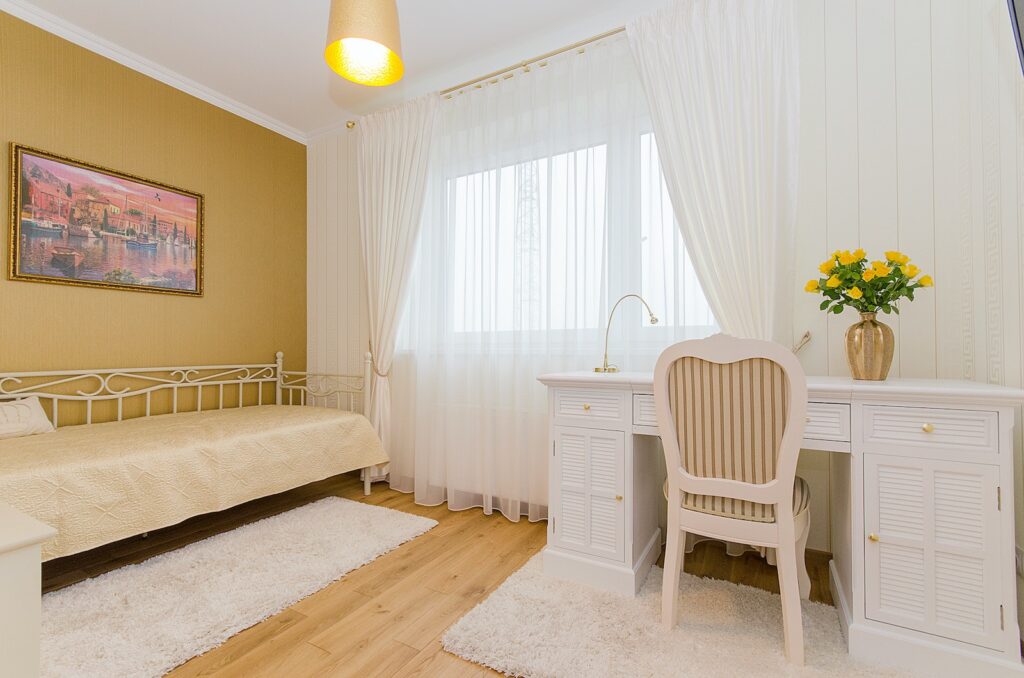
Diy Curtain Cleaning
Curtain cleaning can be a daunting task, especially if you are on a budget. The cost of Cleaning Supplies can be a major factor when considering DIY cleaning. However, the Benefits of DIY Cleaning far outweigh the cost, as you can purchase quality supplies without breaking the bank. Knowing the right Tips for DIY Cleaning can also help reduce the cost of cleaning supplies and make the task easier.
When it comes to drying curtains, it is important to remember to hang them in a well-ventilated area. Spot Cleaning is also important to prevent dirt and grime from building up over time.
-
Cost of Cleaning Supplies
Although professional cleaners come with several benefits, it is not always necessary or even feasible to hire one, due to cost concerns. Cleaning supplies, on the other hand, can be relatively inexpensive and help you manage the mess on your own. Cleaning agents and supplies are often easily available in grocery and department stores, and may even be lying right in your kitchen cabinets. Vinegar, for instance, is a popular cleaning agent used in various DIY projects.
Cleaning supplies and agents are usually fairly affordable, making DIY curtain cleaning a viable option. You can also buy specialized cleaning agents for curtains, if the stains are particularly stubborn or if you have specific kinds of fabric. Buying special cleaning supplies is a good investment in the long run, as it will ensure that your curtains stay beautiful and spotless for years.
Apart from the cost of the supplies, DIY cleaning also saves you the time and effort of finding and hiring a professional cleaner. You can also customize cleaning according to your own needs and preferences. DIY curtain cleaning can be a great way to exercise your creativity and take responsibility for your own home.
Cleaning supplies are an essential part of DIY curtain cleaning.
-
Benefits of DIY Curtains Cleaning
Ah, the satisfaction of a job well done! Who doesn’t love the feeling of a freshly cleaned curtain, free of dust and allergens? DIY cleaning can be a great way to get the job done right, without breaking the bank. Here are some of the benefits of tackling your own curtain-cleaning project:
Firstly, you have full control over the materials used. You can purchase cleaning supplies tailored to your specific curtains, such as fabric-safe detergent or mildew-resistant spray. You can also save money by reusing materials, such as microfiber cloths or soft-bristled brushes.
Plus, you can be sure that your curtains are getting the attention they need, without any unnecessary treatments. Doing a thorough job yourself can ensure that no dirt or dust is left behind. Furthermore, you can take the time to inspect the fabric for any signs of damage and address them before they become a bigger issue.
Another benefit to DIY cleaning is that you can customize the process to suit your needs. For instance, if your curtains are particularly delicate, you can adjust the cleaning technique accordingly – for example, by using a gentler detergent or spot cleaning instead of soaking.
-
Tips for DIY Curtains Cleaning
Thinking about taking on the task of cleaning your curtains yourself? Here are some tips to help you get the job done right.
Before you start, it’s important to gather all the necessary supplies. You’ll need some cleaning products and a few cleaning tools. Make sure to choose products that are specifically designed for the fabric you’re working with. It’s also recommended to have a vacuum cleaner, a sponge, and a brush on hand.
Once you have all your supplies, it’s time to get to work. The first step is to pre-treat any stains or spots. Use the cleaning products you’ve chosen to gently remove the stains. Make sure to read the instructions on the bottle carefully and test the product in an inconspicuous area first.
Once you’ve pre-treated any spots, it’s time to start cleaning. Start by vacuuming the curtains to remove any loose dirt and debris. When that’s done, you can use a sponge and the cleaning product to gently clean the fabric. Work in small sections, from the top to the bottom, and rinse the sponge as you go.
Once you’ve finished cleaning the curtains, it’s important to hang them up to dry.
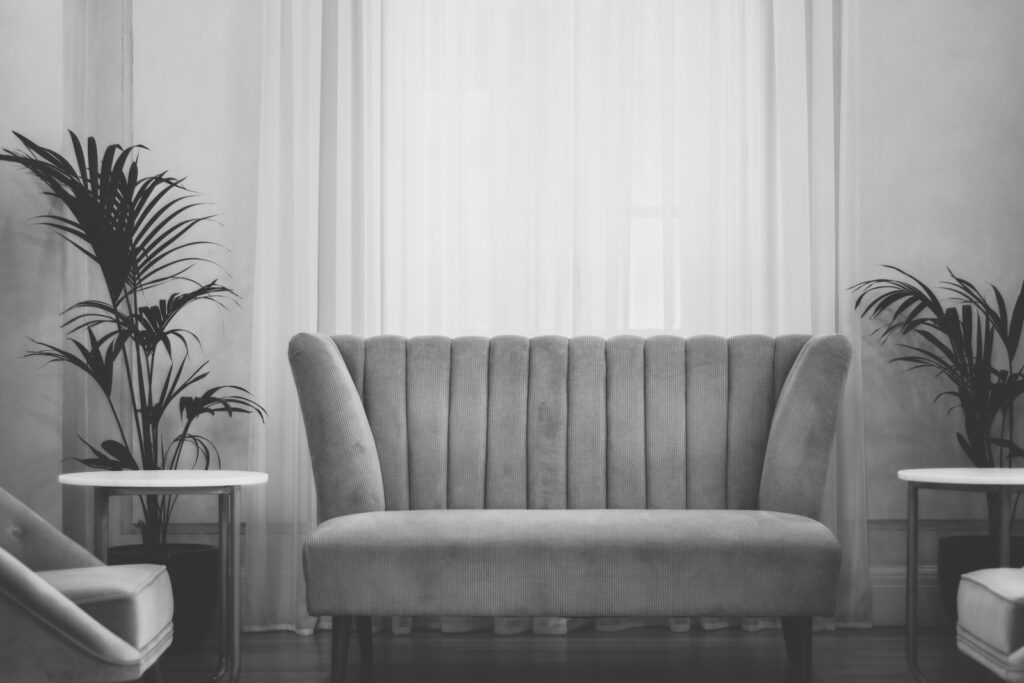
Curtain Cleaning Safety
Cleaning curtains, although seemingly straightforward, should always be done with caution. Health and Safety Guidelines must be followed to protect the cleaner and others in the vicinity from harm. Common Cleaning Chemicals should be used only in well-ventilated areas and in accordance with instructions on product labels.
Wearing Protective Clothing and equipment is also a must to avoid contact with cleaning agents. Proper dust prevention measures should also be implemented to reduce the risk of exposure to airborne contaminants. Last but not least, Protective Gloves should be worn at all times to protect the hands from chemical contact.
-
Health & Safety Guidelines
No curtain cleaning task is worth the risk to your health and well-being. From dust control to the products you use, safety must always be top-of-mind when tackling any cleaning project. Below, we’ll discuss the health and safety guidelines you should follow to make sure you and your surroundings remain safe.
When cleaning curtains, the most important factor is dust control. Dust can be harmful to your health, and depending on the materials you’re cleaning, may contain allergens or other irritants. To prevent dust from traveling, use a HEPA filter vacuum when cleaning curtains, since it traps dust particles more effectively than traditional vacuums.
When using cleaning chemicals, always check the label before using them, and make sure you’re using them in a well-ventilated area. Additionally, it’s important to wear the appropriate protective clothing and equipment to make sure you don’t get any liquid or chemical on your skin. Wear long gloves, a long-sleeved shirt, and safety goggles to protect your eyes.
Finally, it’s important to stay safe while cleaning curtains.
-
Common Cleaning Chemicals
It’s important to consider the safety of yourself and your family when cleaning your curtains. Taking the necessary precautions is key to curtain cleaning safety, and that includes using the correct cleaning chemicals.
When selecting chemicals for your cleaning project, it’s essential to look for products that are designed for use on your type of fabric. Different fabrics require different cleaning agents, so be sure to check the label before you begin. If you’re unsure of which product to use, consider consulting a professional.
Common cleaning chemicals include laundry detergents, fabric softeners, and bleach. Laundry detergents are usually designed to work on a variety of fabrics and are great all-purpose cleaners. Fabric softeners can help keep your curtains smelling fresh and looking vibrant. Bleach should only be used when necessary and on fabrics that can handle it.
It’s also important to use the right concentration of each chemical. Too little and you won’t get the desired effect; too much and you could damage the fabric. If you’re unsure of the exact amount, err on the side of caution and use less. You can always add more if needed.
Finally, make sure to read the instructions for any chemical you use and wear the appropriate protective clothing and equipment.
-
Protective Clothing & Equipment
Now that you know what to look out for and how to clean your curtains, it’s time to focus on safety. While cleaning, it’s important that you take the proper precautions to protect yourself. Protective Clothing & Equipment should be worn at all times to ensure that you don’t expose yourself to hazardous materials or dust.
When cleaning your curtains, wear a face mask to limit your exposure to dust and other particles. A face mask will also help protect you from any cleaning chemicals you are using. Additionally, you should wear protective gloves to protect your hands from any harsh detergents, cleaners, or other chemicals. Wearing long sleeves and pants can also help protect your skin from any cleaners.
In addition to protective clothing, you should also make sure to have plenty of ventilation in the room. Open windows and doors to allow fresh air to enter and help reduce the dust particles in the air. This will help you clean your curtains without creating a hazardous environment.
Finally, it’s important to remember that you should always clean your curtains in a well-ventilated area. This will help prevent you from inhaling any dust or chemicals and will help ensure that your cleaning process is safe and efficient.
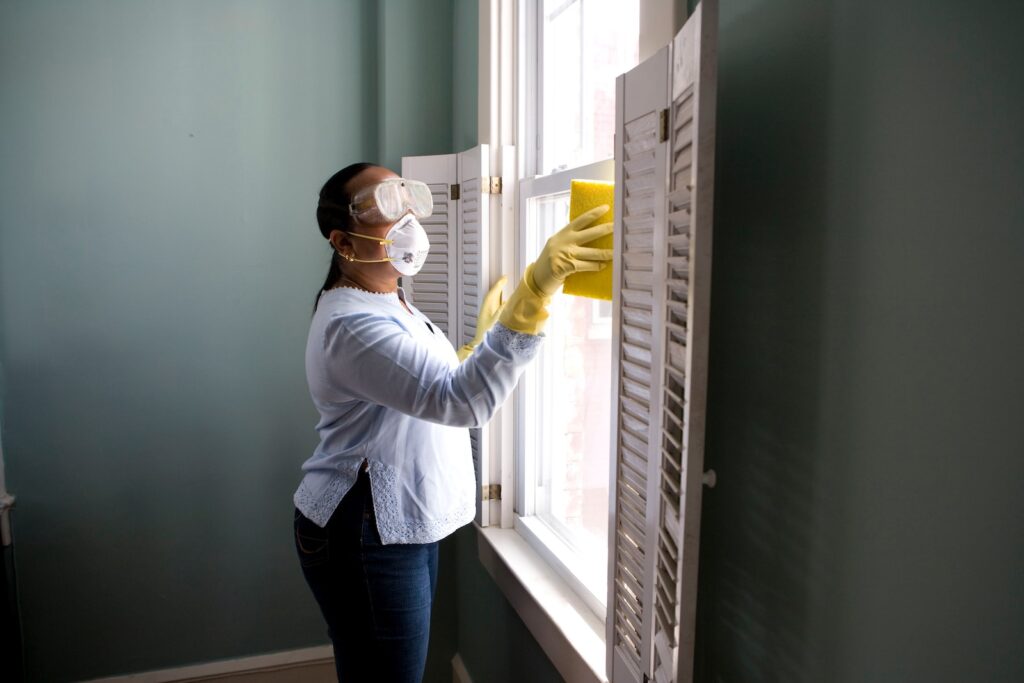
Types of Cleaning Methods
When it comes to cleaning, there are various methods that can be employed, each with its advantages and disadvantages. Dry cleaning is a technique that uses chemical solvents rather than water to remove dirt and stains from fabrics. This method is ideal for fragile materials that cannot be washed in water.
Wet cleaning, on the other hand, is a method that uses water-based solutions and is suitable for items that are not as delicate. Spot cleaning entails addressing individual stains and soiling areas instead of the entire garment.
-
Dry Cleaning
Now that we understand the importance of safety when it comes to curtain cleaning, let’s take a look at the different types of cleaning methods available. Dry cleaning is a popular and preferred method of cleaning curtains. This method involves the use of a vacuum cleaner or a specialized dry-cleaning machine, which is used to remove dirt, dust, and other particles from the fabric. This method is suitable for curtains that are made from delicate materials, as it helps to minimize damage to the fabric. The dry-cleaning process is also faster and more efficient than other methods, making it a great choice for busy households.
-
Wet Cleaning
For the sake of safety, wet cleaning is often the preferred method of curtain cleaning. Not only is this method the safest for yourself and the fabric, it is also the most efficient way to achieve the desired results. The process begins with a thorough vacuuming of the curtains. This helps to remove any loose dirt and debris that may be on the fabric.
Next, the curtains should be pre-treated with a gentle cleaner. This can help to loosen any stubborn stains or dirt that is more difficult to remove. After that, the curtains should be placed in a washing machine and a mild detergent should be used. It is important to make sure that the water temperature is set too cold, as hot water can damage the fabric. Once the cycle is complete, the curtains should be immediately taken out of the machine and hung to dry.
Once the curtains are completely dry, they should be ironed. This will help to smooth out any wrinkles in the fabric and also help to refresh the fabric, giving it a more vibrant appearance. After the curtains have been ironed, they are now ready to be hung back up and enjoyed.
Wet cleaning is a great way to safely and effectively clean curtains.
-
Spot Cleaning
Having discussed the safety measures of curtain cleaning, it’s time to consider the various types of cleaning methods. Spot Cleaning is one of the most common cleaning methods used by professionals and homeowners alike.
Spot cleaning is a method of treating specific areas of a fabric or material that have been soiled or stained. This method of cleaning is ideal for removing small, localized stains without needing to clean the entire fabric. Before attempting to spot-clean a fabric, it is important to test an inconspicuous area of the fabric for colorfastness and shrinkage. This will help to prevent any damage or discoloration to the fabric.
When spot cleaning, you should use a mild cleaning solution and a soft cloth. It is important to be gentle when rubbing the area, as too much pressure or scrubbing can damage the fabric. As you apply the cleaning solution, take care to blot the stain instead of rubbing it. This will help to lift the stain from the fabric without damaging it.
If the cleaning solution does not work, you can try a non-chlorine bleach. This will help to remove stubborn stains without damaging the fabric. Once the stain is removed, it is important to rinse the area with cold water.
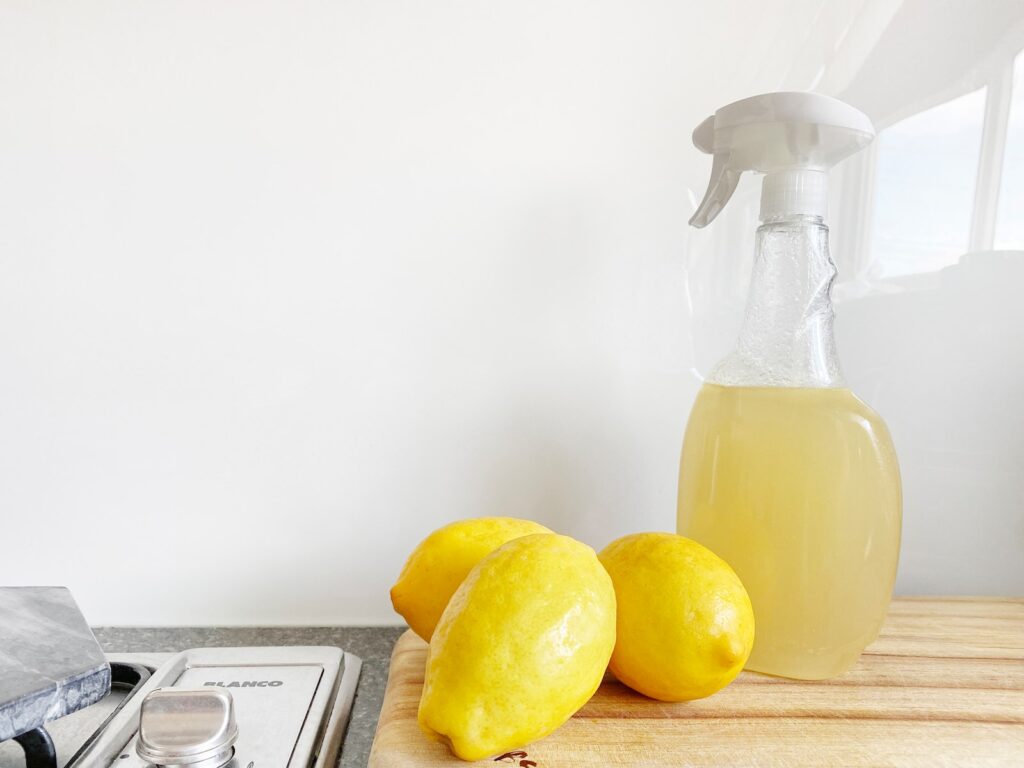
Cleaning Products
Cleaning products are essential for maintaining a healthy environment. From detergents to stain removers, odor neutralizers, and upholstery cleaners, there is a range of products that help keep surfaces clean and fresh.
Detergents are formulated to effectively remove dirt and grime from a wide range of surfaces, from floors to kitchen counters. Stain removers work to lift and remove deep, embedded dirt and grime. Odor neutralizers provide a pleasant aroma and tackle stubborn odors from pets, smoke, and mildew.
-
Detergents
When it comes to cleaning, detergents are the workhorse. Detergents are a type of cleaning agent that contain surfactants, which are molecules that reduce the surface tension between two substances. This makes it easier to spread the detergent over a surface and removes dirt, oils, and other debris. Detergents can be used for a variety of different tasks, from the laundry room to the bathroom.
Dish Detergents are a type of detergent specifically designed to clean dishes and other cookware. They are often formulated with grease-cutting agents that break down fats and oils, as well as other ingredients to help lift away dirt.
Clothing Detergents are also available and are specifically formulated to clean clothes and remove stains and odors. They are often formulated with enzymes that help break down proteins and starches, which can be found in many types of food and beverage stains.
All-purpose detergents are a type of detergent that can be used for many different types of cleaning tasks. These detergents are formulated to be mild enough to be used for a wide range of surfaces, from counters and floors to bathroom tiles and furniture.
-
Stain Removers
To truly tackle those tough stains, nothing beats a good stain remover. Stain removers come in a variety of formulas, allowing you to tackle nearly any type of stain. For example, you can find a remover for grease stains, pet stains, ink stains, and more. They are usually applied directly to the stain and then left to sit for a few minutes before washing.
One of the most popular types of stain removers is an oxidizing cleaner. This type of cleaner works by releasing oxygen molecules that react with the stain molecules, breaking them down and making them easier to remove. These types of removers are effective on a wide variety of stains, including coffee, tea, and red wine.
Another type of stain remover is a bleaching agent. These products typically contain chlorine or hydrogen peroxide and work by breaking down the color molecules in the stain. This type of remover is perfect for removing stains from white clothing and is also effective against most food stains.
Finally, there are stain removers that use enzymes to break down the stain molecules. These removers are specifically designed for organic stains, such as food, grass, and blood.
-
Odour Neutralizers
As the smell of pets, smoke, or sweat accumulates, an odour neutralizer is essential for a thorough cleaning. Odour neutralizers are designed to counteract and eliminate odors, leaving the area fresh and pleasant. They come in a number of forms, including sprays, liquids, and powders. In terms of efficacy, liquid odour neutralizers tend to work best, as they can be sprayed directly onto a surface or added to a cleaning solution. The liquid will quickly penetrate into fabric, carpet, and other materials, knocking out any odours.
Spray odour neutralizers are ideal for spot treatments and smaller areas, such as upholstered furniture or vehicles. They are easy to use and portable, making them perfect for on-the-go cleaning that needs to be done quickly. Powdered odour neutralizers are great for large, tough odours in commercial settings, like fitness centers and locker rooms. The powder can be sprinkled onto the affected area and left to sit for a few minutes before being vacuumed up.
Using an odour neutralizer correctly is important for effectively eliminating odors. If the odour neutralizer is too strong, it can cause nose and throat irritation for those in the surrounding area.

Cleaning Techniques
When it comes to cleaning techniques, vacuuming, dusting, blotting, shampooing, and pre-treatment are some of the most effective methods. Vacuuming helps to remove dirt and dust from carpets and upholstery. It is important to ensure that the vacuum cleaner has an adjustable height setting and a good filter for maximum effectiveness. Dusting should be done with a damp cloth to avoid spreading dust particles in the air. Blotting is important for removing spills and stains. It can be done with a cloth or paper towel to absorb the excess liquid.
-
Vacuuming
With the correct cleaning products in hand, it’s time to move on to the next step: vacuuming. What can be said about vacuuming that hasn’t already been said? Vacuuming is one of the most important and effective techniques in maintaining a clean home or office. Not only does it remove dirt and debris from carpets or upholstery, but it also improves air quality.
Vacuuming is the process of using a vacuum cleaner to clean surfaces and remove dirt, dust, and debris. It can be done on all types of surfaces including carpets, rugs, upholstery, and hard floors. The most important thing to remember is to use the correct type of vacuum for the particular surface. For example, a carpet requires a vacuum with a beater bar or rotating brush, while hard floors require a vacuum with a bare floor setting.
The process of vacuuming is quite straightforward. Start by vacuuming one small area at a time, slowly working your way across the room. Vacuum in overlapping strokes, paying special attention to high-traffic areas. When vacuuming carpets, it’s important to move the vacuum cleaner slowly with the grain of the carpet, then switch directions and vacuum against the grain.
-
Dusting
It’s time to get out of the trusty duster! Dusting can be the most tedious and time-consuming of all the cleaning techniques, but it can also be the most rewarding. There’s nothing like the feeling of running a duster over a surface and seeing it come out looking like new. Bolding the dust away can help add a shine to any surface, making it look as good as new.
When it comes to dusting, it’s important to use the right tool for the job. A feather duster, for example, is great for getting rid of small particles of dust, but can sometimes spread the dust around instead of collecting it. A microfiber cloth, on the other hand, can help trap and collect the dust, leaving a surface looking clean and shiny. Also, it’s important to use a ladder or step stool when necessary to reach those hard-to-reach places.
When dusting, it’s important to remember to start from the top and work your way down. This will help ensure that all the dust that falls to the ground is collected. It’s also important to be sure to dust all surfaces – from walls and shelves to furniture and window sills – as dust can accumulate quickly and go unnoticed.
-
Blotting
Ah, the sweet smell of clean carpets and rugs! After the scrubbing, wiping, and polishing of the floor surfaces, it’s time to take that extra step to bring it all together. Blotting, or steam cleaning, can be a great way to get those carpets and rugs looking their best.
Blotting is one of the most effective ways to remove dirt, debris, and other residue from carpets and rugs. By using a combination of heated water and a specially formulated cleaning solution, blotting can break down and lift dirt from the fibers of your carpets and rugs. This process also helps to reduce allergens, dust, and pet dander, leaving your carpets and rugs feeling soft and looking beautiful.
The best way to get started with blotting is to find a professional cleaner who’s experienced in the practice. They will be able to assess your carpets and rugs and determine the best cleaning solution for your specific needs. A professional cleaner can also provide guidance on how often your carpets and rugs should be cleaned, as well as what type of maintenance is necessary to keep them looking their best.
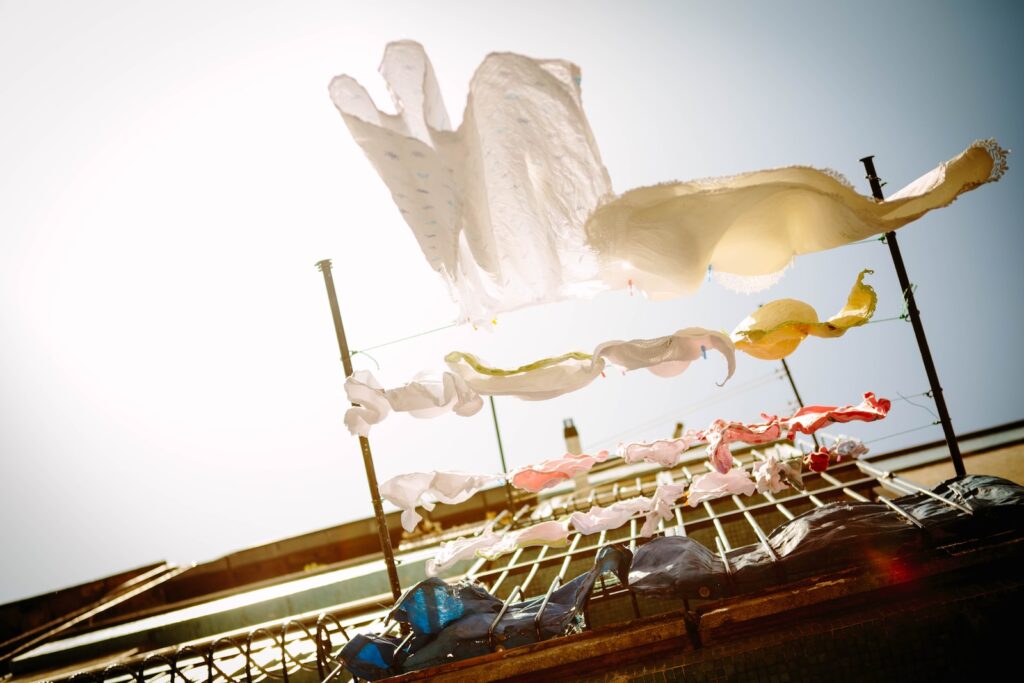
Hang & Dry
Hanging curtains can be a challenging task. However, it can be done with patience and the right tools. The first step in the process is to measure and mark the area where the curtains will hang. This helps ensure that the curtains are hung in the correct place and at the correct height. Once the area is marked, the next step is to attach the curtain rod to the wall and hang the curtains on the rod.
When the curtains are hung, it is important to air dry them to prevent any wrinkles or shrinkage. Air drying is done by hanging the curtains in a well-ventilated area and allowing them to air dry naturally.
-
Hang Curtains
Having already discussed the various cleaning techniques, the next step is to learn how to hang and dry your curtains. Hanging your curtains is the first step in bringing a room to life, and if done correctly, can really make a room pop! The first thing to do is to measure the window. It’s important to get the measurements just right, so you know how much fabric to buy for the curtains. Once you have the measurements, you can then select the type of curtain rod you want to use. There are countless options, from traditional rods to modern rods.
Next, you want to measure the width of the curtain fabric and the length of the fabric. You’ll want to make sure the fabric is long enough to cover the entire window. Then, you can hang the curtains on the rod. Generally, curtains are hung from the top of the window, but you can also hang them from the sides.
Once the curtains are hung, it’s time to air-dry them. The best way to do this is by hanging them outside. If you don’t have access to an outdoor space, you can also hang them up in the bathroom or near a window. Just be sure to check the curtains every few days to make sure they’re not getting too damp.
-
Air Dry Curtains
After the curtains are freshly cleaned, the next step is to hang and dry them. For those who prefer an eco-friendly approach, air-drying curtains are a great option. Air-drying curtains allow the fabric to dry naturally, eliminating the need for an energy-hungry dryer.
First, the curtains should be hung in a well-ventilated area that receives at least moderate sunlight. This helps to speed up the drying process. If possible, a ceiling rod or clothesline is the best option for hanging. Be sure to check the fabric’s care label for specific instructions.
An alternative to hanging is to lay the curtains out on a flat surface. This works best for lightweight and delicate fabrics. Spread the curtains out as wide as possible and be sure to fluff them periodically to encourage even drying.
The drying process can take anywhere from several hours to a few days, depending on the weight of the fabric and the humidity. It’s important to check the curtains periodically to ensure that they are drying properly.
Air-drying curtains are an ideal solution for those who want to reduce energy costs and keep their curtains looking great. Not only is it a great way to save money, but it’s also an environmentally friendly option.
-
Iron Curtains
Having hung and dried your curtains, the next step in the process is to iron them. Ironing curtains is a very important step in the cleaning process and can make a huge difference in how they look and feel. Ironing curtains helps remove any wrinkles and gives them a crisp, clean look.
When ironing your curtains, it is important to make sure that you are using the right temperature setting. If you set the temperature too high, it can cause the fabric to burn or melt. In order to avoid this, make sure to set the iron to the lowest temperature setting recommended for the type of fabric you are working with. It is also important to use a damp cloth or spray bottle to help keep the fabric moist while you are ironing.
It is also important to make sure that you are ironing the curtains in the right direction. If you are ironing curtains with a pattern or design, make sure to iron the pattern in the same direction. This will ensure that the pattern is not distorted or damaged.
It is also important to take care when ironing curtains with pleats. Make sure to iron the pleats in the same direction, and be careful not to press too hard, as this can cause the pleats to become distorted.

Prevention & Maintenance
The importance of Prevention and maintenance cannot be overstated. From Regular Cleaning to Window Treatments, one must always keep an eye out for potential problems. Regular Vacuuming is a must to keep up with dirt and dust while Brushing out debris is also important. Occasional Checking for damage is also recommended to ensure everything is running smoothly. With these simple steps, one can easily maintain their beloved space.
-
Regular Cleaning
To ensure the long-term success of your Hang and dry laundry routine, proper Prevention and maintenance is key. This includes regular cleaning, window treatments, regular vacuuming, brushing out debris, and checking for damage. Regular cleaning is a must to keep your laundry area looking its best.
Start with a thorough dusting. Grab a microfiber cloth and wipe down all of the surfaces in the area. This will help remove dust, dirt, and other particles that accumulate over time. You can also use a vacuum with an upholstery attachment to get into hard-to-reach spots.
Wipe down any metal surfaces. This includes all of the metal components of your Hang & Dry system, such as the frame, the tracks, and the hardware. Use a damp cloth to wipe down the metal and then buff it dry with a microfiber cloth. This will keep the metal looking shiny and new.
Clean the curtains and windows. Curtains and windows provide a great opportunity for dust and dirt to accumulate, so make sure to clean them regularly. Depending on the fabric, use either a steam cleaner or a damp cloth to wipe down the curtains. For the windows, use a squeegee to remove dirt and grime.
-
Window Treatments
Now that we’ve discussed the importance of hanging and drying clothes, let’s move on to prevention and maintenance. To keep fabrics looking like new, regular cleaning and window treatments are key.
Windows can be a source of fading, so it’s important to invest in good quality window coverings, such as drapes and shades, to help keep fabrics out of direct sunlight. Natural fabrics, such as cotton and linen, are more prone to fading, so it’s important to take extra precautions if you have these materials in your home.
It’s also a good idea to regularly vacuum and brush out debris from any upholstered furniture to help keep fabrics looking fresh. Vacuuming helps remove dirt, dust, and other particles that can cause fading and wear. Additionally, try to avoid placing furniture directly in front of a window. This will help keep fabrics out of direct sunlight, reducing the risk of fading.
Finally, it’s important to check for damage. Over time, fabrics can start to show signs of wear and tear. Regularly inspecting fabrics for any rips, tears, or other signs of damage can help prolong the life of fabrics.
-
Regular Vacuuming
Moving from the importance of hang and dry maintenance to prevention and maintenance, regular vacuuming should be part of a regular cleaning routine. Vacuuming is a necessary part of routine maintenance to keep carpets looking great and to remove dirt, dust, and allergens that can settle deep into the fibers of the carpet. Carpeting should be vacuumed at least once a week, and more frequently in high-traffic areas or if there are pets in the home.
To ensure that vacuuming is being done properly, start by selecting the appropriate vacuum and setting for the type of carpet. Upright vacuums are a popular choice, but they can be too powerful for certain types of carpeting. In this case, canister vacuums are more suitable, as they have a lower suction setting and can be adjusted for the type of carpet.
When vacuuming, don’t be afraid to move in a slow and methodical pattern. Begin by going over the same section of the carpet multiple times in different directions. Moving the vacuum in a back-and-forth motion is a common technique, but going in circular motions can be just as effective. This technique ensures that no section of the carpet is missed.

Curtain Cleaning Services
When it comes to Curtain Cleaning Services, it can be tricky to decide which route to take. Professional cleaners and cleaning companies both offer reliable services, but it pays to compare cleaning costs to get the best deal. Additionally, different methods of curtain cleaning can be employed, depending on the material of the curtains.
From dry cleaning to steam cleaning, each method has its own unique advantages. For those seeking an eco-friendly option, there are cleaning solutions available that use natural ingredients and pose no risk to the environment. The best way to determine which solution is right for you is to consult a professional.
-
Professional Cleaners
If you’re looking for a way to ensure your curtains are kept looking pristine and in perfect condition, using professional cleaners might be the answer. Professional cleaners can help you keep your curtains spotless, no matter how much wear and tear they endure over time. From regular maintenance to deep cleaning services, there are a variety of services available to fit your needs.
Using a professional cleaner means you can trust that your curtains will be cleaned in a safe, effective, and timely manner. With expert knowledge and experience, they can provide the best cleaning methods for your specific type of curtains. From steam cleaning solutions to dry cleaning techniques, they can tackle any and all stains, dirt, and debris. Plus, they can provide the best cleaning solutions for any fabric and material.
Professional cleaners also have the right tools and equipment to get the job done. From advanced cleaning solutions to powerful vacuums, they have everything they need to ensure your curtains look as good as new. They’ll also be able to identify any issues with your curtains, such as wear and tear or discoloration. This way, they can take the necessary steps to fix or repair any damage to restore your curtains.
-
Cleaning Companies
Curious to know who can help clean your curtains? With the wide variety of cleaning companies available, it can be overwhelming to choose the right one.
Rather than picking the first one you come across, take the time to compare cleaning costs and services from different companies. Some companies may offer discounts or promotions that can help you save money. Plus, you can easily find out what kind of services the company offers, and how experienced they are in curtain cleaning.
When comparing companies, be sure to also consider the different methods of curtain cleaning they use. Some companies may use steam cleaning, while others may use dry cleaning or a combination of both. No matter which method they use, it’s important to make sure that they use the right cleaning solutions for your type of curtains.
It’s also a good idea to ask for references from each company. You can then ask the references for their opinion about the company’s services. This will help you make an informed decision and ensure that you’re choosing the professional cleaners that are best suited to your needs.
-
Compare Cleaning Costs
When it comes to cleaning your curtains, it can be difficult to decide between hiring a professional cleaner or a cleaning company. After all, comparing cleaning costs and services can be a daunting task. Fortunately, there are a few ways you can compare cleaning costs and find the best option for you.
First, it’s important to understand the different methods of curtain cleaning. For instance, dry cleaning is a popular and effective option for cleaning some fabrics, while steam cleaning can be a great option for heavier fabrics. Depending on your fabric type, you may need to choose a specific cleaning method in order to ensure that your curtains are properly cleaned.
Second, look into prices for professional cleaners and cleaning companies. Professional cleaners may be more expensive than a cleaning company, but they typically offer more personalized services. Also, they can provide specific cleaning solutions for curtains that may not be available from a cleaning company.
Third, compare the services offered by each option. Professional cleaners may have more specialized services for cleaning curtains, such as stain removal or fabric protection. On the other hand, cleaning companies may offer a wider array of services, such as carpet and upholstery cleaning.
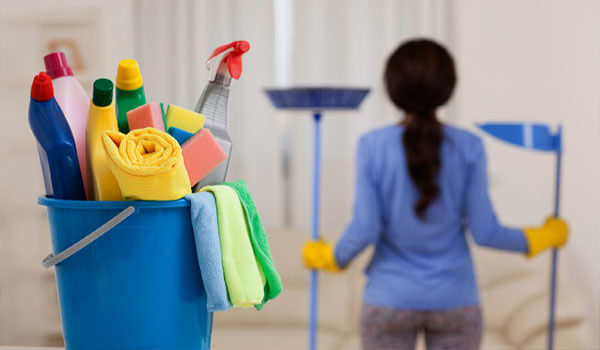
Frequently Asked Questions (FAQ) about Curtain Cleaning Cost
-
How much does curtain cleaning typically cost?
The cost of curtain cleaning can vary depending on factors such as the type of curtains, their size, fabric, level of soiling, and your location. On average, professional curtain cleaning can cost anywhere from $20 to $100 per curtain panel.
-
Do curtain cleaning services charge per panel or per window?
Curtain cleaning services often charge per panel. If your curtains have multiple panels on one window, each panel will be counted separately for pricing purposes. Some services may also offer discounts for cleaning multiple curtains or windows.
-
Are there additional charges for special fabrics or delicate materials?
Yes, there might be additional charges for curtains made from delicate or specialty fabrics that require extra care during cleaning. Delicate materials like silk or velvet may need specialized cleaning techniques, which can affect the overall cost.
-
How does the size of the curtains impact the cleaning cost?
Larger curtains typically require more time and effort to clean, which can result in higher costs compared to smaller curtains. The length and width of the curtains will be considered in determining the final price.
-
Are there any extra fees for pickup and delivery services?
Some curtain cleaning services offer pickup and delivery options, especially for bulky or heavy curtains. There might be an additional fee for this convenience, so it’s essential to inquire about pickup and delivery charges beforehand.
-
Can I save money by removing and rehanging the curtains myself?
Removing and rehanging the curtains yourself might save you some money, as some cleaning services charge extra for these additional tasks. However, be cautious when handling delicate curtains to avoid any damage during the process.
-
Do I need to take down the curtain hardware before cleaning?
In most cases, you’ll need to take down the curtain hardware before sending the curtains for cleaning. This ensures a thorough cleaning process and prevents any damage to the hardware. Cleaning services usually focus on cleaning the curtains only.
-
Are there DIY options for curtain cleaning to save costs?
Yes, there are DIY curtain cleaning options available, such as using a fabric steamer or vacuum cleaner with a fabric attachment. However, professional cleaning may be more effective in removing deep stains and ensuring a thorough cleaning.
-
Do curtain cleaning services offer any guarantees or warranties?
Many reputable curtain cleaning services offer guarantees or warranties for their work. This means that if you are unsatisfied with the cleaning results, they may re-clean your curtains or offer a refund.
-
How often should I clean my curtains to maintain their condition?
The frequency of curtain cleaning depends on various factors, including the fabric type, location, and how often they are exposed to dust and dirt. Generally, it’s recommended to have curtains professionally cleaned every 6 months to 1 year to maintain their appearance and prolong their lifespan.
Conclusion
Cleaning curtains can be a daunting task. From selecting the right cleaning method and products to getting the perfect results, there are many factors that can influence the cost of curtain cleaning. Professional cleaners can be hired for more complex and thorough cleaning tasks, while DIY cleaning can be achieved with the right tools and techniques. Regardless of the chosen method, safety should always be the top priority.
When it comes to curtain cleaning, it pays to be diligent. Regular maintenance can help prolong the life and beauty of your curtains while investing in professional cleaning services can keep your curtains looking spotless. With the right approach and technique, you can enjoy clean and beautiful curtains for years to come.

